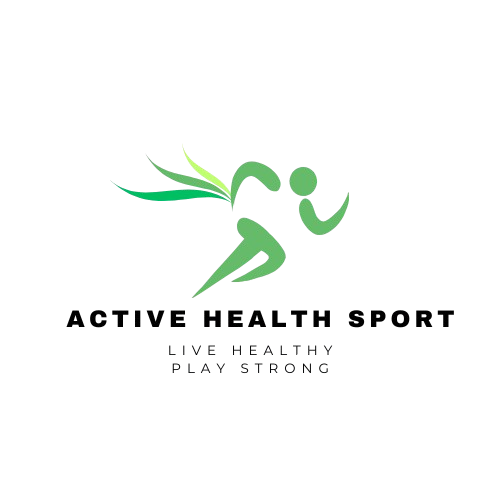Introduction | Why Desk Workouts Matter
In today’s fast-paced, technology-driven work culture, long hours of sitting have become a daily reality for many professionals. The sedentary lifestyle is increasingly linked to a host of health concerns, including chronic back pain, poor posture, decreased energy levels, and even long-term risks like obesity and cardiovascular issues. The human body is designed to move, and prolonged inactivity can take a toll on both physical and mental well-being.
Desk workouts provide a simple yet impactful solution to these challenges. They involve integrating short, effective exercises into your workday, allowing you to stay active without disrupting your professional responsibilities.
These exercises also foster mental clarity, reduce stress, and promote productivity. Whether it’s a quick stretch to ease tension or light movements to boost circulation, desk workouts can be seamlessly adapted to fit into any workplace setting. With growing awareness about workplace wellness, incorporating these activities is becoming essential for professionals seeking a healthier, more balanced lifestyle.
Desk workouts offer a path to reclaiming your health, one stretch or movement at a time, without ever leaving your desk. In this blog, we’ll explore the main benefits of desk workouts, how to incorporate them into your daily life, and more.
What are the Risks of Sedentary Jobs?
A sedentary lifestyle is increasingly recognized as a significant health risk, particularly for those in desk jobs where sitting for prolonged periods is the norm. The impact of this lifestyle extends beyond physical discomfort, contributing to both immediate and long-term health issues.
1. Poor Circulation
Extended hours of sitting can significantly impair blood flow, especially in the lower extremities. Reduced circulation increases the risk of developing conditions like deep vein thrombosis (DVT) and varicose veins. Over time, it can also strain the heart, leading to potential cardiovascular complications.
2. Muscle Stiffness and Pain
Remaining in the same position for long hours leads to muscle imbalances, stiffness, and joint discomfort, particularly in the neck, shoulders, and lower back.
3. Weight Gain and Metabolic Issues
Lack of movement slows metabolism, making it harder for the body to regulate blood sugar and fat levels. Over time, this can contribute to weight gain, insulin resistance, and an increased risk of developing type 2 diabetes.
4. Mental Fatigue and Reduced Productivity
A sedentary lifestyle doesn’t just affect the body, it takes a toll on the mind, too. Lack of movement reduces oxygen flow to the brain, leading to mental fog, lower energy levels, and decreased focus.
5. Increased Risk of Chronic Conditions
Studies link prolonged sitting with an elevated risk of chronic diseases, including heart disease, hypertension, and certain types of cancer. These risks persist even for individuals who exercise regularly outside of work hours, emphasizing the importance of frequent movement throughout the day.
Desk workouts provide an effective way to combat these risks. Incorporating regular stretches and light exercises into your workday improves circulation, alleviates stiffness, boosts metabolism, and enhances mental clarity.
Quick and Effective Desk Workouts
Here are some easy-to-do exercises that require minimal space and no special equipment:
1. Seated Leg Raises
- Sit upright with your feet flat on the floor.
- Extend one leg straight out and hold it for a few seconds before lowering it.
- Repeat for 10-15 reps on each leg.
Benefit: Strengthens your leg muscles and improves circulation.
2. Chair Squats
- Stand in front of your chair and lower yourself as if sitting down, but stop just before touching the chair.
- Hold for a few seconds, then return to a standing position.
Benefit: Strengthens your core and lower body while enhancing balance.
Also Read: The Best 10-Minute Stretching Routine for Busy Persons

3. Desk Push-Ups
- Place your hands on the edge of your desk, step back, and perform push-ups.
- Keep your body straight and engage your core.
Benefit: Tones your arms, shoulders, and chest.
4. Wrist and Hand Stretches
- Extend one arm with the palm facing upward, and use the other hand to gently pull back your fingers.
- Switch hands and repeat.
Benefit: Reduces tension and prevents strain from typing.
5. Neck Rolls
- Slowly roll your neck in circular motions to the left and right.
Benefit: Relieves neck tension and improves mobility.
How to Incorporate Desk Workouts into Your Routine
Integrating desk workouts into your daily routine doesn’t require a complete overhaul of your schedule. With a few mindful adjustments, you can transform your workday into an opportunity to stay active and improve your health. Here’s how:
1. Set Reminders
One of the simplest ways to remember to stay active is by setting regular reminders. Use alarms on your phone, smartwatch, or computer to prompt movement every 30-60 minutes. Apps like “Stand Up!” or “Stretchly” can also send notifications tailored for desk workouts. These small nudges encourage consistency, which is key to making desk exercises a habit.
2. Stand or Move During Calls
Replace sitting during calls with standing or pacing. Use this time to stretch your legs, do calf raises, or even march in place. If you’re on a video call, consider using a standing desk or adjusting your camera angle to accommodate movement. These small changes can significantly reduce the amount of time you spend sitting each day.
3. Use Breaks Wisely
Transform your short breaks into opportunities for physical activity. Instead of scrolling through social media or checking emails, dedicate 5-10 minutes to desk-friendly exercises like seated leg lifts, shoulder rolls, or wall push-ups. Even a brisk walk around the office or climbing a few flights of stairs can refresh your body and mind.
4. Create a Supportive Environment
Encourage colleagues to participate in desk workouts, fostering a workplace culture that values health and fitness. Suggest group stretch sessions or fitness challenges, such as step-count competitions. Collaborating with others makes workouts more enjoyable and adds an element of accountability.
5. Invest in Ergonomic Tools
Consider incorporating equipment like resistance bands, small hand weights, or an under-desk pedal exerciser. These tools make it easier to perform strength and mobility exercises without leaving your desk. Additionally, an ergonomic chair or standing desk can support better posture, reducing the strain from prolonged sitting.
6. Customize Your Routine
Tailor desk exercises to suit your needs and preferences. For instance, if you experience frequent neck stiffness, focus on neck stretches and upper body movements. If you’re aiming to boost energy, incorporate cardio-based activities like high-knee marches or jumping jacks during extended breaks.
Over time, these small but consistent actions will contribute to improved fitness, posture, and overall well-being.
Also Read: How Stretching Can Keep Seniors Active and Pain-Free

What Are the Top Benefits of Desk Workouts?
Desk workouts offer significant advantages for your physical and mental well-being, especially for those with sedentary jobs. Here’s a deeper look at why incorporating these exercises can transform your workday:
1. Improved Posture
Sitting for long hours often leads to slouching and poor posture, which can result in back pain and neck strain. Regular stretches and simple desk exercises, such as seated spinal twists and shoulder rolls, help counteract this by strengthening your core and aligning your spine.
2. Enhanced Productivity
Physical activity has been shown to boost blood flow and oxygen to the brain, leading to improved focus and creativity. Desk workouts, such as stretching or engaging in light movements, can break up long periods of stagnation, reenergizing your mind. A ten-minute stretch session might be all you need to overcome mental fatigue and approach tasks with renewed clarity.
3. Reduced Stress
Movement triggers the release of endorphins, the body’s natural stress-relieving hormones. Incorporating desk workouts like deep breathing exercises or yoga stretches can help you manage work-related tension, reduce anxiety, and enhance your mood.
4. Better Overall Health
Inactivity is a major risk factor for chronic conditions such as diabetes, heart disease, and obesity. Desk workouts, even in short intervals, contribute to regular movement throughout the day, helping regulate blood sugar, improve circulation, and maintain a healthy weight. Activities like leg lifts, seated stretches, or using an under-desk pedal exerciser are excellent ways to counteract the health risks of prolonged sitting.
Incorporating desk workouts into your day not only mitigates the risks of a sedentary lifestyle but also enhances your energy, focus, and overall well-being, making them an essential practice for anyone tied to a desk.
Real-Life Desk Workout Success Stories
1. Anil Khana – Fighting Stiffness in the Tech World
Anil Khana, a 36-year-old software engineer from Seattle, WA, spent most of his day glued to dual monitors, often working 10+ hours with barely a lunch break. Over time, he started noticing persistent neck stiffness, low energy, and mild lower back pain. Initially, he dismissed it as a natural result of a demanding job. However, when the discomfort began affecting his sleep and focus, he knew something had to change.
After reading a post on the Active Health Sport blog, Anil started incorporating simple desk workouts, shoulder rolls, seated spinal twists, and resistance band stretches into his routine. He set a timer to move every 45 minutes, and within a couple of weeks, the change was dramatic. Not only did his discomfort subside, but he also reported feeling more mentally alert throughout the day.
“I didn’t need a new chair, I needed to move more,” Anil told our team.
2. Valeria Seth – From Zoom Fatigue to Daily Flow
Valeria Seth, a 42-year-old HR consultant based in Charlotte, NC, was juggling remote work and parenting two teens. With back-to-back Zoom meetings, she rarely left her desk, leading to what she described as “Zoom fatigue” and a growing sense of burnout.
After connecting with the Active Health Sport Team, Valeria created a personal desk workout regimen that included standing calf raises, seated leg lifts, and wall push-ups. She started doing them between meetings and even encouraged her coworkers to join during virtual coffee breaks. Within a month, Valeria noticed improved circulation, reduced afternoon slumps, and even better posture.
“It sounds small, but those five-minute bursts saved my sanity,” she said.
3. Marry Vuslar – Aging Gracefully with Movement
Marry Vuslar, 59, works part-time as an administrative assistant in a law firm in Des Moines, Iowa. While she enjoyed her job, the long hours spent sitting made her feel achy and sluggish by the end of each shift. She worried that staying inactive for most of the day was accelerating her joint stiffness and affecting her long-term health.
Marry found the Active Health Sport blog while searching for “easy stretches for desk workers” and was thrilled to find a list of age-friendly desk workouts. She adopted a simple stretching routine using her desk chair, neck tilts, wrist circles, and seated marches. After a few weeks, she shared that her knees hurt less, and her energy lasted longer into the evening.
“It’s never too late to start moving more,” she told us with a smile.
Whether you’re in tech like Anil, managing remote meetings like Valeria, or working through later stages of your career like Marry, desk workouts provide a smart, sustainable way to stay active. These small efforts add up, helping fight stiffness, improve mental focus, and support long-term health, without leaving your workspace.
Let these stories be your reminder: movement is medicine, even at your desk.
What are the tools and apps used to support desk workouts?
Incorporating desk workouts into your daily routine is easier with the help of tools and apps designed to promote movement and healthy habits during work hours. Here are some excellent options:
- Stretchly
Stretchly is a user-friendly desktop app that reminds you to take short, regular breaks. It provides simple stretching exercises you can do right at your desk, helping combat stiffness and promote circulation. Customizable reminders make it a perfect companion for staying active during busy workdays. - Stand Up! The Work Break Timer
Designed for both iOS and Android, this app encourages regular movement by sending alerts to stand up or take a quick walk. With adjustable intervals and motivational messages, it’s particularly useful for individuals in sedentary jobs who need frequent reminders to stay active. - FitOn
FitOn offers a library of short workout videos, many of which are office-friendly. From seated stretches to quick desk exercises, the app provides guided routines that can fit seamlessly into your work schedule. Its versatility makes it suitable for all fitness levels. - DeskFit
This app focuses on desk-specific exercises tailored to combat the negative effects of prolonged sitting. It includes features like guided tutorials, progress tracking, and ergonomic advice to help you maintain good posture. - Pomodoro Timers with Exercise Prompts
Apps like Focus Booster and TomatoTimer not only help manage your work tasks but can also be paired with physical activity prompts. After each focused work interval, they remind you to stretch or perform a quick desk workout, integrating movement into your workflow.
Final Thoughts | Stay Fit at Your Desk
Desk workouts are a practical and effective way to combat the negative effects of prolonged sitting in the workplace. These small efforts can lead to big changes, keeping you focused, productive, and physically fit even during busy workdays. Incorporating desk workouts into your routine is not just about fitness; it’s about adopting a balanced and healthier lifestyle.
Whether it’s a quick stretch, a few desk push-ups, or a mindful breathing exercise, these simple activities can help you stay active, reduce stress, and maintain mental clarity throughout the day. At Active Health Sport, we are passionate about promoting accessible fitness solutions for everyone.
Desk workouts are a testament to how small, consistent steps can create lasting change. Start incorporating these tips into your daily routine today, inspire your colleagues to join you, and take a significant step toward a healthier, more active lifestyle right from your desk! That’s all from today, folks! For more expert advice and fitness tips, explore our blogs and find solutions tailored to your busy work schedule.
You might also like…
- Active Recovery for CrossFitters: Walking & Mobility Explained
 CrossFit pushes athletes to their physical limits, lifting heavy, sprinting, jumping, and performing high-intensity functional movements. While the intensity delivers impressive gains, it also places tremendous stress on muscles,… Read more: Active Recovery for CrossFitters: Walking & Mobility Explained
CrossFit pushes athletes to their physical limits, lifting heavy, sprinting, jumping, and performing high-intensity functional movements. While the intensity delivers impressive gains, it also places tremendous stress on muscles,… Read more: Active Recovery for CrossFitters: Walking & Mobility Explained - How Walking and Stretching Boost CrossFit Recovery (Duo)
 CrossFit recovery, athletes often chase intensity, heavy lifts, quick transitions, and heart-racing WODs (Workouts of the Day). Yet, the key to consistent progress isn’t just in the effort you… Read more: How Walking and Stretching Boost CrossFit Recovery (Duo)
CrossFit recovery, athletes often chase intensity, heavy lifts, quick transitions, and heart-racing WODs (Workouts of the Day). Yet, the key to consistent progress isn’t just in the effort you… Read more: How Walking and Stretching Boost CrossFit Recovery (Duo) - How Nutrition Impacts Sleep: Foods That Help (and Hurt) Your Night’s Rest
 You Are What – and When – You Eat We often think of sleep as a nighttime habit, but the truth is that good sleep begins with what you… Read more: How Nutrition Impacts Sleep: Foods That Help (and Hurt) Your Night’s Rest
You Are What – and When – You Eat We often think of sleep as a nighttime habit, but the truth is that good sleep begins with what you… Read more: How Nutrition Impacts Sleep: Foods That Help (and Hurt) Your Night’s Rest

Kait Amazra is the founder and lead writer of Active Health Sport. With over 25 years of experience in health, fitness, and wellness education, Kait combines professional expertise with a passion for helping people live stronger, healthier, and more balanced lives.
As a licensed health and fitness professional, Kait has worked alongside industry experts to deliver evidence-based insights on physical activity, nutrition, recovery, and holistic well-being. Through Active Health Sport, Kait’s mission is to make trusted, practical, and science-backed health information accessible to everyone, from beginners building new habits to athletes seeking peak performance.

